This 10-day China tour for seniors is one of the best China tours for seniors. The cities and attractions we have chosen for you are senior-friendly. Beijing, Xi’an and Shanghai, the most famous tourist destinations of China, are equipped with high-quality and convenient public facilities. You don’t need to walk very much or climb the hill. For example, you can take round-trip cable cars to go up and down the Mutianyu Great Wall instead of climbing. For Dunhuang, the attractions we have chosen for you are not far away from the downtown and can be reached with ease. Come and join this 10-day China tour for seniors with us. We will never let you down.

As soon as you arrive in Beijing, your private tour guide will give you a warm welcome and transfer you to the hotel where you will make a recovery from a long exhausting flight.
Today your tour guide will lead you to the central axis of Beijing. The first attraction you will see along the central axis is Tian’anmen Square, the largest city center square in the world so far. It is the place where some significant events took place, such as the May 4th Movement in 1919 and the founding ceremony of the People’s Republic of China in 1949. Looking north across Chang’an Avenue, you will see the Tian’anmen Gate Tower. During the Ming (1368-1644) and Qing (1636-1912) dynasties, it was the place where national edict was issued and spread to the whole country.
Then go along the central axis to the Forbidden City (closed each Monday) in the north. The Forbidden City used to be the residence and workplace for the 24 emperors during the Ming and Qing dynasties. According to the statistics, there are more than 70 palaces and over 9,000 rooms in the Forbidden City. For senior travelers, don’t worry about walking. Your tour guide will show you the most classic route with less walking. Into the Forbidden City, the first and grandest palace you will see is the Taihe Palace, also known as the Hall of Supreme Harmony. The 24 emperors of the Ming and Qing dynasties all held grand ceremonies here. For example, when the emperor was crowned, got married, or celebrated his birthday, grand gatherings and celebrations would be held. At that time, the bells and drums were ringing in front of the hall and the smoke rose up from the 18 incense burners standing out of the hall. The emperor was sitting upright in his throne to accept the worship of the civil and military officials who were kneeling down in rows and lines in front of the Hall of Supreme Harmony. You can imagine how spectacular the scene was.
After lunch at an authentic restaurant, your tour guide will take you to the best-preserved imperial garden – the Summer Palace. It was the summer resort for the emperors of the Qing Dynasty. Longevity Hill and Kunming Lake are the main components of the Summer Palace. Besides, there is the Buddhist Fragrance Pavilion, the Long Corridor, the Hall of Benevolence and Longevity, and so on. It’s worth mentioning that as soon as entering the Summer Palace, you will see a long stone bridge over Kunming Lake. There are 17 archways in the bridge, so it was named Seventeen-Arch Bridge. Around the December Solstice every year, a spectacle will appear at the Seventeen-Arch Bridge. When the sun is about to set in the afternoon, the golden rays of the setting sun illuminate the 17 archways, forming a magnificent landscape. This is commonly known as “Golden Light Penetrating Holes”. If you come here around the December Solstice and are lucky enough, don’t miss it!
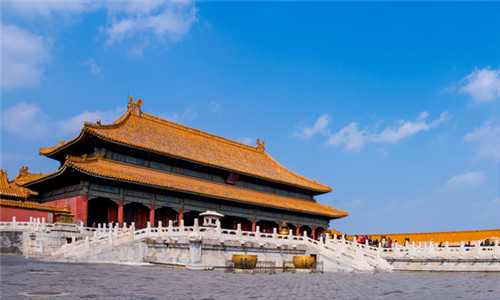
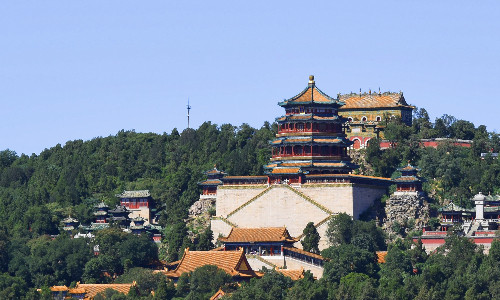
After visiting the emperors’ residence and the imperial garden, today you will go to the imperial cemetery – the Ming Tombs to see where the 13 emperors of the Ming Dynasty were buried. The Ming Tombs is located at the foot of Tianshou Mountain in Changping District, northwest of Beijing, with a total area of more than 120 square kilometers. It’s about 50 kilometers away and about 1 hour’s drive from the center of Beijing. Chang Tomb, the earliest and largest of the Ming Tombs, is the tomb where the third emperor of the Ming Dynasty, Zhu Di and his empress were buried. Emperor Zhu Di is highly rated in history for his great achievements. Among the cultural monuments included in the “World Heritage List”, 4 items were first built by Emperor Zhu Di, namely the Forbidden City, the Temple of Heaven, the Ming Tombs, and the ancient Taoist buildings of Wudang Mountain in Hubei. Even though Zhu Di ordered to build Chang Tomb for himself, he’s not the first to be buried here. It is his empress who died earlier and then was buried in this tomb first.
In the afternoon, you are going to the Mutianyu Great Wall for sightseeing. It’s about 45 kilometers northeast and about one hour’s drive from the Ming Tombs. Due to the natural beauty around it, the Mutianyu Great Wall enjoys the honor of “outshining other sections of the Great Wall”. In spring, flowers are all over the mountains; in summer, the trees are dense and verdant; in fall, red leaves hanging on the trees form a red sea; in winter, everything is covered by snow like a fairyland. Besides, senior travelers can go up and down the Mutianyu Great Wall with ease by taking cable cars. If you are keen on excitement, taking a toboggan down the Mutianyu Great Wall is also available for you. (Seniors above 60 years old are not allowed.
On the way back to the hotel from the Mutianyu Great Wall, you will stop at the Bird’s Nest and the Water Cube for taking some beautiful pictures. The Bird’s Nest was the main venue of the 2008 Beijing Olympic Games. Now it has been used as a national stadium for holding large international sports events and concerts. The Water Cube served as the venue for water sports, such as swimming, diving, and so on. Since 2010, a water park has been open to the public in the Water Cube. It is currently one of the largest and most advanced indoor water parks in the world.
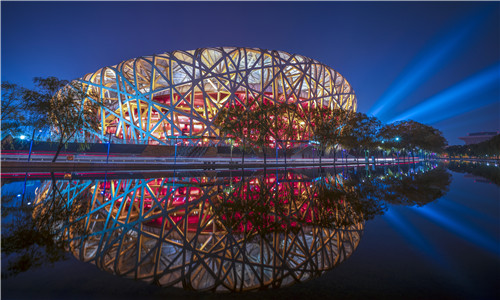
 Xi’an
Xi’an Today you will go to Beijing Zoo to have a wonderful experience with a variety of animals. Beijing Zoo is the earliest zoo in China with a history of more than 100 years. Meanwhile, it is also one of the largest zoos in China, with the richest animal species. There are a total of nearly 1,000 species of animals in the zoo, of which about 500 species are quite rare, such as giant panda, Asiatic lion, ring-tailed lemur, and so on. Of course, the most worth mentioning is the giant panda, the “National Treasure of China”. You will see these cute and precious creatures in the Panda House. Watching them playing in the courtyard, eating bamboos, and climbing trees will be a leisurely and joyful experience for senior tourists.
After lunch, you will be transferred to the railway station and take the estimated train G87 14:00/18:19 to Xi’an. Your Xi’an tour guide will greet you at the railway station and then transfer you to the hotel.
Xi’an, known as Chang’an in ancient times, is one of the birthplaces of Chinese civilization. Together with Athens, Cairo, and Rome, Xi’an is known as the world’s four major ancient capitals. It had served as the capital city throughout 13 dynasties, including the four most powerful dynasties in Chinese history, namely Zhou (1046-256 BC), Qin (221-207 BC), Han (202 BC-220 AD) and Tang (618-907 AD). Many ruins such as the Terra Cotta Warriors and Horses, Big Wild Goose Pagoda, and Ming City Wall have become the famous cultural landmarks of Xi’an.
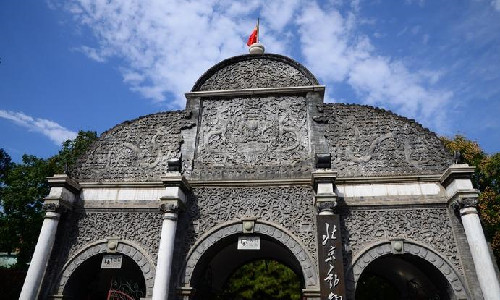
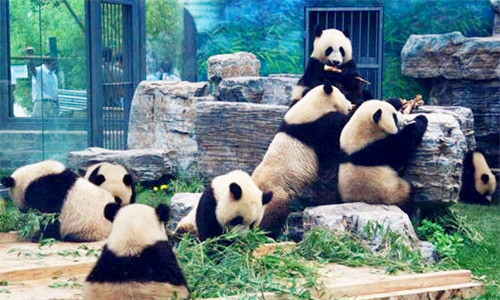
This morning, you will follow your guide to explore the Terra Cotta Warriors and Horses Museum which located 45 kilometers northeast of the Xi’an city. It takes about 1 hour to get there. The terra cotta figures displayed in the museum are standing solemnly to protect the mausoleum of Emperor Qinshihuang (the first emperor of the Qin Dynasty). The Terracotta Warriors and Horses has been one of the greatest discoveries in the world’s archaeological history, known as the “eighth wonder of the world”. However, you may not know that it was originally discovered by accident when a villager of Tong County, Xi’an city, was drilling a well in the summer of 1974. The villager dug out a clay human head at a depth of five meters and then reported the news to the local cultural relic department. After several years of investigation and excavation by the cultural relics department, the majestic Terracotta Warriors and Horses guarding the Mausoleum of Emperor Qinshihuang was finally revealed.
The lunch will be served at a local restaurant. After lunch, we will go to the Big Wild Goose Pagoda. It was built in the 3rd year (652) of the Yonghui period during the Tang Dynasty to preserve the Buddhist scriptures brought back by Monk Xuanzang from ancient India via the Silk Road. If you look at the pagoda afar carefully, you may find that the pagoda is leaning to the northwest. An important reason for the inclination of the pagoda is that years of over-pumping of groundwater resulted in land subsidence. Therefore, to protect the Big Wild Goose Pagoda, the Xi’an Municipal Government has sealed more than 400 wells around the Big Wild Goose Pagoda and injected surface water into the underground aquifer to increase groundwater reserves. Since 1997, the Big Wild Goose Pagoda has stopped tilting. It has been calculated that it will take about 1,000 years for the Big Wild Goose Pagoda to restore its upright position.
Then the Great Mosque will be the last attraction on today’s itinerary. The Great Mosque, also known as the “East Great Mosque”, is the largest mosque in Xi’an and also one of the earliest, largest and best-preserved mosques in China. It is the major religious venue for more than 60,000 Muslims in Xi’an. It is very different from the typical mosques with hemispherical roofs. Composed of pavilions, halls, and corridors with traditional Ming and Qing architectural styles, it is a treasure house of architectural art full of Chinese elements. It has been honored as “the only Chinese-style Islamic mosque in the world”.
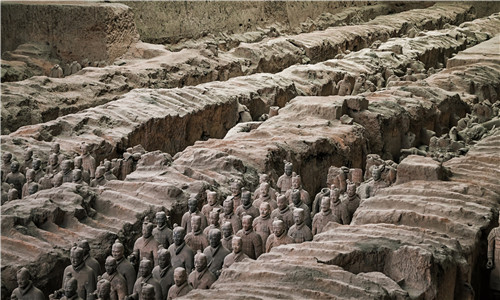
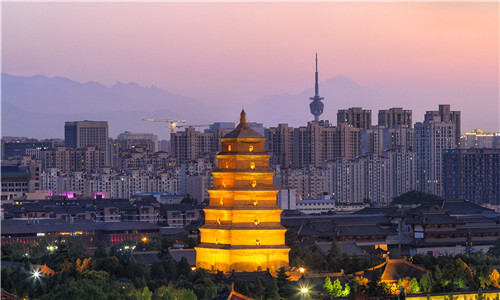
 Dunhuang
Dunhuang Today you are going to say goodbye to Xi’an and head for Dunhuang by taking the estimated flight MU2215 12:10/14:45. Your private local guide will pick you up at the airport and transfer you to the hotel for a good rest.
Dunhuang is located at the junction of Gansu, Qinghai, and Xinjiang provinces. As an important traffic hub on the Silk Road, there are rich historical marks left in Dunhuang, such as Jumen Pass, Yangguan Pass, Hecang City Ruins, and so on. Well-nourished by its mother river – the Dang River, Dunhuang is an important producing area of high-quality fruits in Gansu Province. Especially the grapes from Dunhuang are quite sweet, crisp, and seedless, so Dunhuang has been awarded the titles of “National High-quality Grape Production Base” and “China’s Famous Grape City”.
After finishing your breakfast, you will be driven to Mogao Grottoes, 25 kilometers away from southeast Dunhuang. It takes about half an hour to drive there. Known as the “Thousand Buddha Caves”, there are 492 existing caves, more than 45,000 square meters of murals, and 2,415 colorful clay sculptures at the Mogao Grottoes. It is the largest and most abundant Buddhist art site in the world. Together with the Yungang Grottoes in Shanxi and the Longmen Grottoes in Henan, they have been honored as China’s “Three Treasure Houses of Grotto Art”.
In No.257 Cave, there is a piece of mural telling the story of the Nine-Color Deer. According to a legend, there was a beautiful nine-color deer living by the Ganges River in ancient India. One day, the nine-color deer saved a drowning man in the Ganges River, and the man promised that he would keep the secret of seeing the nine-color deer in return. In the luxurious imperial palace, the queen dreamed of the beautiful nine-color deer. She pleaded with the king to catch the nine-color deer just because she wanted to make a mattress with the colorful deerskin. The king agreed and offered a huge reward for the person who would provide the clue. Lured by the huge amount of money, the drowning man broke his promise and told the king where to find the nine-color deer. In the end, the nine-color deer was captured alive and taken back to the imperial palace. When it saw the drowning man, tears of grief and anger flowed down its face and it told everything to the king. After hearing that, the king ordered that no one was allowed to hurt or capture the nine-color deer. However, the drowning man suddenly got sores all over his body with stinky smells because of breaking his promise.
After lunch, you are going to the Echoing-sand Dune and Crescent Spring. The scenic area is located 5 kilometers south of Dunhuang, covering an area of 30,000 square kilometers. The Echoing-sand Dune is more than 40 kilometers long from east to west and 20 kilometers wide from north to south. The Crescent Lake with a length of 100 meters and a width of 25 meters is surrounded by the Echoing-sand Dune. Located in the desert, the water resources in the area are deficient. The mean water level of Crescent Lake is only 1.5 meters. It’s really a wonder that Crescent Lake is still full of vitality without drying up.
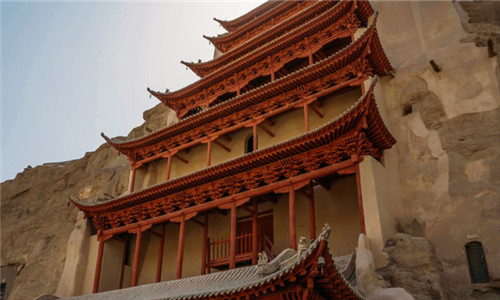
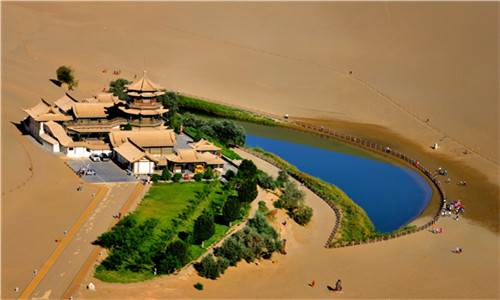
 Shanghai
Shanghai In the morning, you are going to explore the ancient Jade Gate Pass, an important pass on the Silk Road. The Jade Gate Pass was hence named because Hetian Jade was imported into the Central China through it in ancient times. It was the only gateway for the merchants in the Central China to enter the Western Regions along the great Silk Road. At that time, the Jade Gate Pass presented a prosperous scene – every day, there are long camel teams marching throught the Jade Gate Pass. Right now, the current Jade Gate Pass is still standing in the desolate Gobi Desert, becoming a witness to the historical prosperity and glory of the Silk Road.
Then you will go west to the Han Great Wall. The Han Great Wall was built during the reign of Emperor Wu of the Western Han Dynasty (202 BC-8 AD) to resist the invasions of the Huns in the north and protect the frontier. It was built more than 1,000 years earlier than the Great Wall in Beijing. Many precious historical relics have been discovered at the site of the Han Great Wall. For example, the Western Han paper unearthed from the Qianqiu Beacon Tower predates the Eastern Han paper (It was believed to be the earliest paper in China) made by Cai Lun by more than 170 years.
Then lunch will be served at a local restaurant. After lunch, you will be transferred to the airport and head for Shanghai by taking the estimated layover flight 9C6138 16:40/21:55. Upon arrival, your Shanghai tour guide will greet you at the airport and transfer you to the hotel for a good rest.
Shanghai is located at the mouth of the Yangtze River, facing the Pacific Ocean. The Yangtze River Delta where Shanghai stands is one of the regions with the most active economic development, the highest degree of openness, and the strongest innovation capabilities in China. With such a surrounding environment, Shanghai is one of China’s most international cities. Till 2019, there are a total of 76 foreign consulates, 76 foreign media organizations, 720 regional headquarters of multinational companies, and 461 foreign R&D centers settling in Shanghai. This well-designed Shanghai trip is best for seniors to witness its past as well as its present at a relaxing pace.
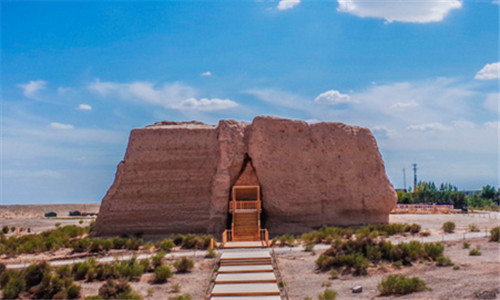
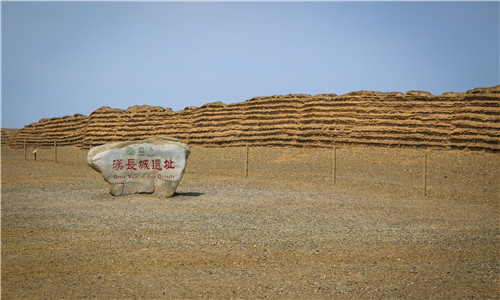
This morning you will know about Shanghai by seeing its past. The first attraction you are going to visit is Yu Garden (closed each Monday). Yu Garden is the only existing garden of the Ming Dynasty in downtown Shanghai with a history of more than 400 years. Although Yu Garden is not large, it is an exquisite garden with obvious South China styles during the Ming and Qing dynasties. Decorated with various plants, rockeries, bridges, and flowing water, the garden is like a beautiful Chinese landscape painting. Therefore, there is a saying goes that Yu Garden represents China in the eyes of foreigners; it represents Shanghai in the eyes of Chinese people; it represents the old hometown in the eyes of Shanghai people.
Then we come to the Jade Buddha Temple with a history of more than 100 years. It is famous for the Jade Buddha Statue enshrined and worshiped in the Jade Buddha Hall behind the Great Buddha’s Hall. This Jade Buddha Statue was carved in Burma and then shipped back to Shanghai. It’s finely carved and beautifully decorated. Its forehead is inlaid with a diamond, its eyebrows are inlaid with agates, and its clothes are decorated with pearls, gems and gold foils. The nine dragons behind the Jade Buddha Statue are also made of gold foils. Its unrivaled beauty has made it the most precious treasure of the temple.
After finishing your lunch, you will go to Shanghai Tower to see modern Shanghai. Shanghai Tower is a super high-rise landmark located in the center of Lujiazui. It boasts 127 floors above the ground and 5 floors under the ground. With a total height of 632 meters, it surpasses the nearby Shanghai World Financial Center (492 meters) and Jinmao Tower (420 meters), making it the tallest skyscraper in China and the second tallest in the world. At the observatory on the 118th floor, you can admire the stunning skyline at the top of Shanghai.
Down the Shanghai Tower, you will follow your guide to the Bund across the Huangpu River, one of the landmarks of Shanghai. There are 52 classical old buildings with different styles gathering on the Bund, known as the “International Architecture Exhibition Group”. Strolling along the road is the most optimal way to explore the Bund. You will see the Waldorf Astoria Shanghai on the Bund. It used to be the Shanghai Club for the British expatriates in Shanghai since 1864. It was the most luxurious club at that time. When the British expatriates went back to Britain after the founding of New China, its business ended. In 1989, the first KFC in Shanghai opened on the 2nd floor of this building.
The last attraction of today is the Nanjing Road. It is the earliest commercial pedestrian street in Shanghai, and one of the “Top Ten Famous Pedestrian Streets in China”. This is a gathering place for department stores with a wide range of goods, thus enjoying a reputation of “paradise for shoppers”. You can see Apple’s flagship store, Daimaru Department Store (a high-end Japanese department store), Wing on Department Store (a Hong Kong chain department store), and so on. At the same time, you will also see some famous local food stores, such as Taikang Food Store (fresh pork moon cake), Shen Da Cheng Pastry Shop (sweet green rice ball), and Shanghai First Foodhall (butterfly cookie). It’s the best place for you to buy some presents for your family and friends.
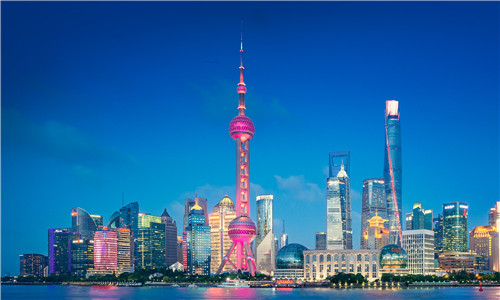
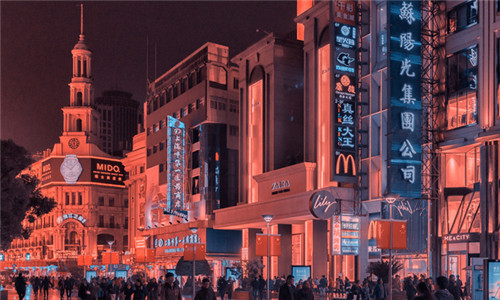
Today you will say goodbye to Shanghai as well as China and go back to your country. Your tour guide will accompany you to the airport and then bid farewell to all of you. Your China tour ends here.
Author: Lingyun Zhou
Proofreader: Lexie Jia
| City | Five Star hotel list | Four Star hotel list |
|---|---|---|
| Beijing | Sunworld Dynasty Hotel Beijing Wangfujing | Sunworld Hotel Wangfujing |
| Xi'an | Tianyu Gloria Grand Hotel Xi'an | Sunworld Dynasty Hotel |
| Dunhuang | Wan Sheng International Hotel | Gansu Dunhuang Hote |
| Shanghai | Ocean Hotel Shanghai | Courtyard by Marriott Shanghai Central |
 |
![]() About your child or infant, please contact us for a discounted price.
About your child or infant, please contact us for a discounted price.



We started with a few days in Beijing & ended in Shanghai, from where we visited the Forbidden City and Great Wall. In between we visited Terra Cotta Warriors Museum, Panda Base, Shanghai Disneyland.

We had a wonderful holiday in China which will remain long in the memory. China is a breathtakingly beautiful country full of splendid temples and palaces, mountains and rivers, peaceful rural scenes and bustling shopping streets.
 QUICK ENQUIRY
QUICK ENQUIRY